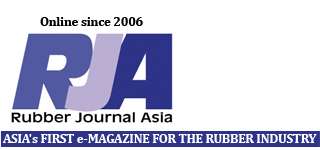A recent study about the SSBR market, which has been conducted by consulting company Stratley Portfolio Performance on behalf of speciality chemicals company Lanxess, has pointed out a key point that is trending now in the global tyre industry.
The paper features findings based on the opinions of decision-makers from the marketing and development departments of 32 tyre manufacturers from across the globe that make up some 84% of global tyre sales.
Low-rolling-resistance tyres are making a headway and high-performance solution styrene-butadiene rubber grades (SSBR) and Nd-PBR (Neodymium based Performance Butadiene Rubber) are what shaping these tyres.
Experts opine that the introduction of tyre labeling across Europe in 2012 would present an ironic scenario in the tyre sector, emphasising that cheap tyres made of conventional types of rubber will become more expensive, because of the rising fuel prices, and the dwindling demand from environmental-conscious buyers.
Investments in tyres (made from modern synthetic rubber) that consume less energy pay off increasingly quickly. Automotive producers have also long been in favor of “green” tyres ” to further minimise the fuel requirements of their products. Other vital considerations for consumers to buy these high-performance green tyres are their long service life and better safety properties, which can be raised to a high level through the use by the manufacturer of special-purpose rubber from Lanxess. Joachim Grub, head of the Lanxess Performance Butadiene Rubbers business unit said that the tyre sector has already entered a new materials era.
The study also indicated that 85% of all respondent tyre companies expect the new EU regulation to significantly impact their daily business, with most seeing this as an opportunity rather than a burden. In high-performance tyres, SSBR – particularly in combination with silica fillers – is expressly considered by many to be vital. The study also pointed out that SSBR will have significantly overtaken conventional emulsion-styrene-butadiene rubber (ESBR) , in five years’ time twice as much SSBR will be used in car tyres as ESBR. However a percentage of the respondents also agree that supply situation is critical.
In lieu of the study, Lanxess assures itself as a reliable supplier for these rubber grades by conducting efforts such as debottlenecking its SSBR and Nd-PBR-production plants in Europe, Brazil and the United States and increasing their flexibility, along with the building of 140 kilotonnes Nd-PBR facility in Singapore. (RJA)

